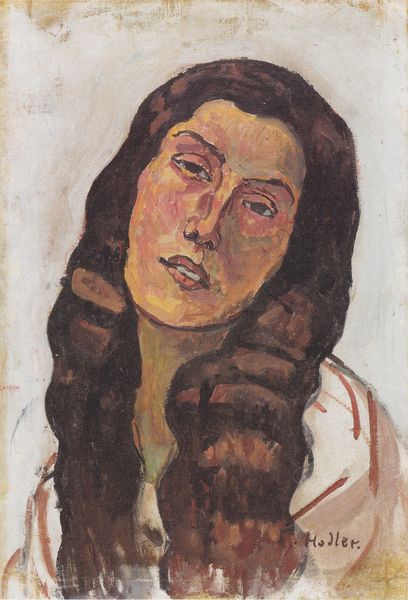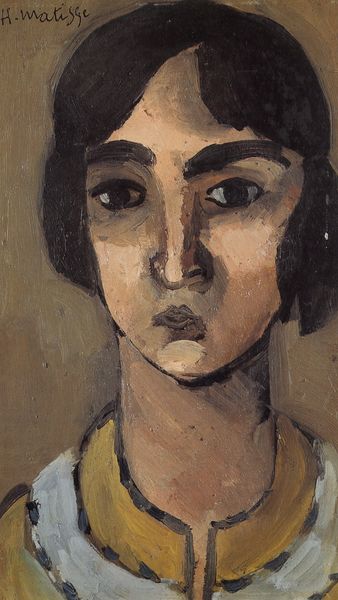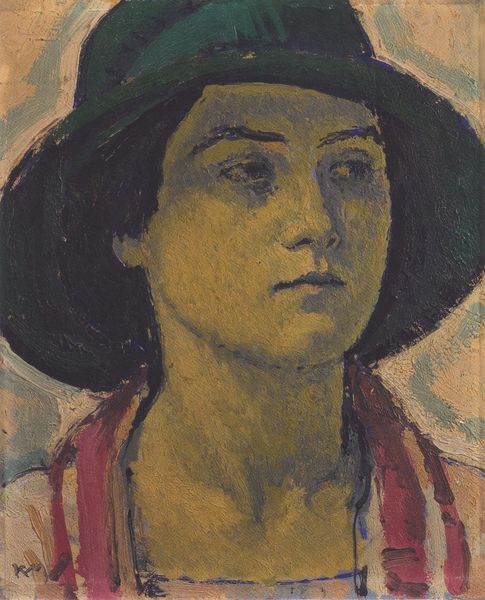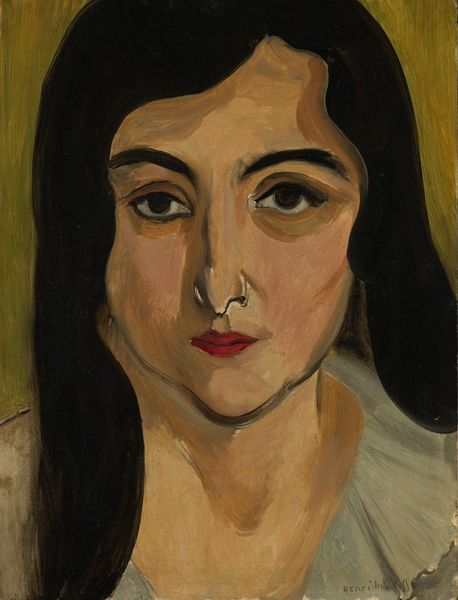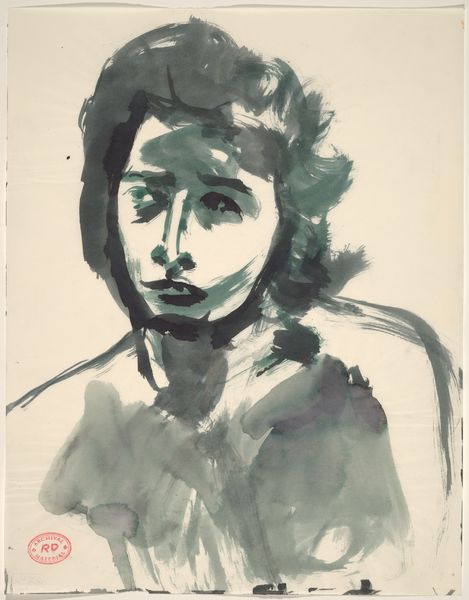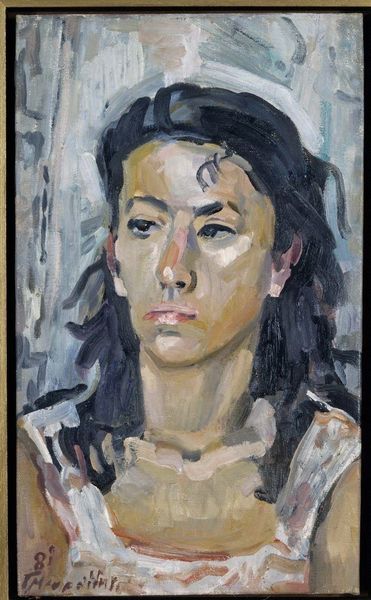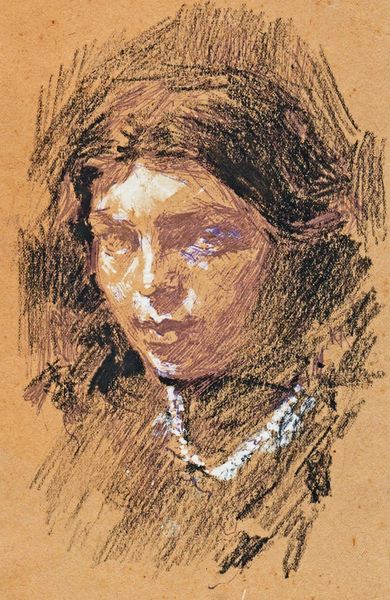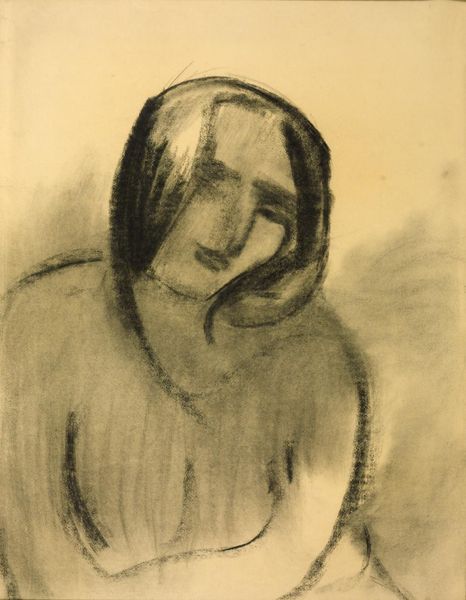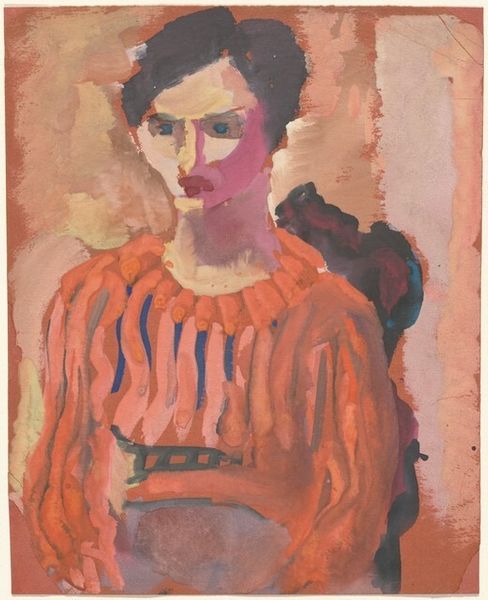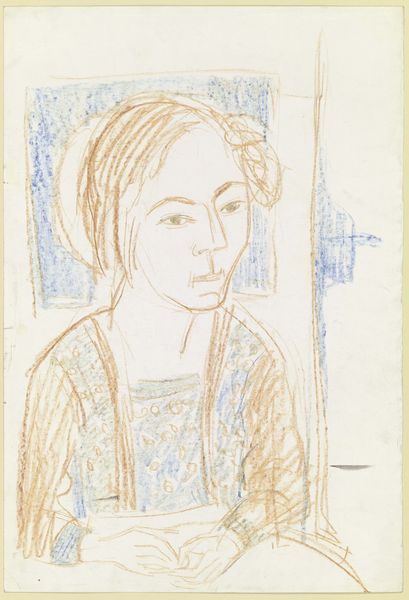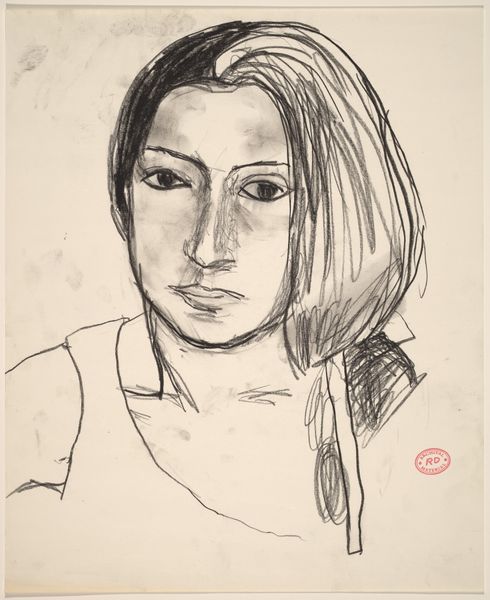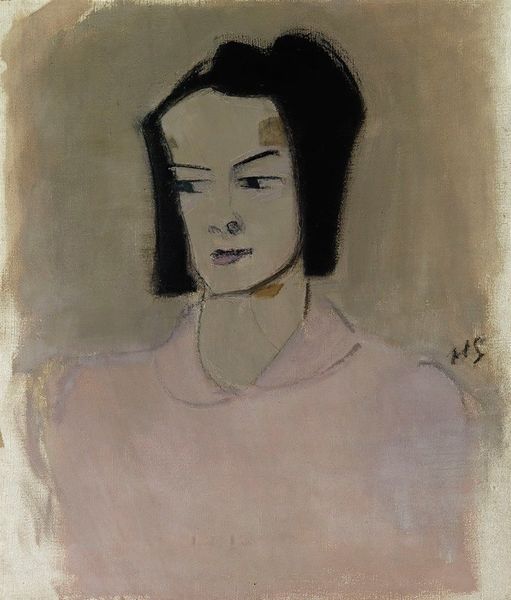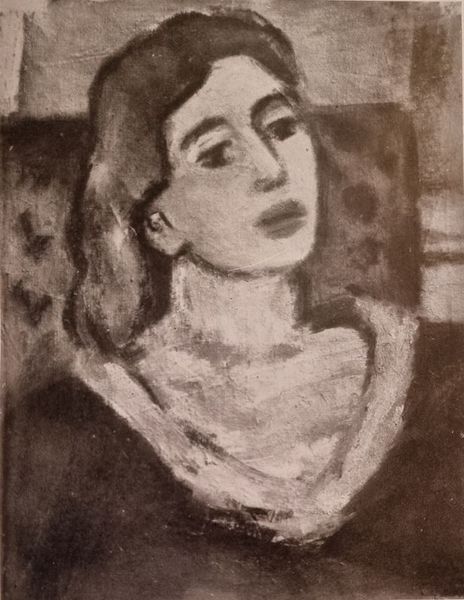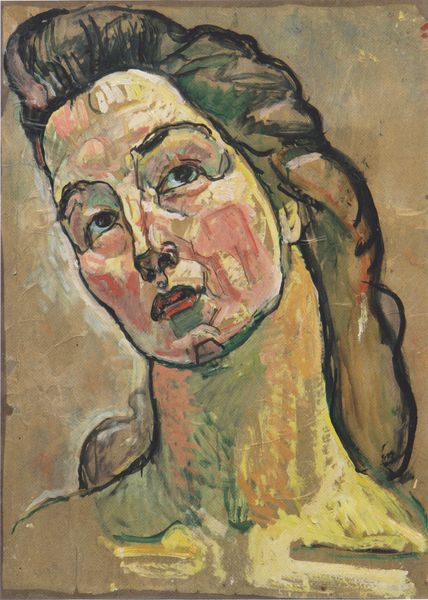
drawing, pencil, graphite, charcoal
#
portrait
#
drawing
#
self-portrait
#
german-expressionism
#
pencil
#
expressionism
#
graphite
#
portrait drawing
#
charcoal
Copyright: Public Domain
Editor: This is Max Beckmann's "Portrait of Marie Swarzenski," created around 1927. It looks like a charcoal drawing. There's a contemplative, almost melancholic mood to it. What do you see in this piece, beyond the surface? Curator: The melancholy you sense is palpable. I see more than just a portrait; I see a reflection of the Weimar Republic, a period of great social upheaval and artistic experimentation in Germany. Look at the starkness of the lines, the unflinching gaze, the subtle disruption of form. Does it feel unsettling to you? Editor: A little. It's not exactly flattering, but there is a definite sense of presence. Curator: Precisely. This is German Expressionism; these artists were deliberately challenging traditional notions of beauty and representation. They were reflecting the fractured reality of their time – war, economic hardship, and deep social divisions. Notice how the artist used harsh lines to create an honest, perhaps even critical, depiction of Marie. It speaks to a kind of brutal realism, don't you think? How do you read that today, knowing Marie's likely privileged position amidst the social turmoil? Editor: I can see that. So the unflattering nature of the portrait almost comments on the social situation in Germany. It shows us she is not immune to the suffering, even with her privilege. Curator: Absolutely. Beckmann uses Marie's image to express the cultural climate of the time, rather than only highlighting the subject’s beauty. It is fascinating how, by deconstructing the familiar, Beckmann pushes us to confront uncomfortable truths. What can we learn from portraits like this about accountability and social responsibility? Editor: I never thought a portrait could be so political. This makes me want to explore German Expressionism and Weimar Republic art a lot more now!
Comments
stadelmuseum almost 2 years ago
⋮
Georg Swarzenski (1876–1957) – a onetime director of the Städelsches Kunstinstitut – and his wife Marie belonged to the circle around Max Beckmann in Frankfurt. Here the artist captured Marie Swarzenski (1889–1967) in a pastel drawing. The soft crayons enabled him to ‘paint’ by overlapping and blurring the lines. Owing to their light hues in contrast to the brownish paper, they also lent themselves well to creating a sense of plasticity and strong light values. The figure appears lifelike and three-dimensional. At the same time, she avoids direct eye contact to the viewer so that, however captivating, the portrait also has an unapproachable quality.
Join the conversation
Join millions of artists and users on Artera today and experience the ultimate creative platform.
